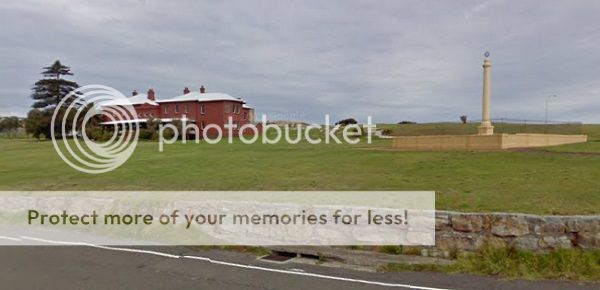Jean-François de Galaup, comte de Lapérouse, apart from having a ridiculously overly long and complicated name, lent his name to the suburb at the very very end of Anzac Parade in Sydney's east. What we learn about de Galaup (Lapérouse was the name of a family property that he added to his name) is that if there had been more storms in the world for the previous 36 weeks, Australia would probably be French speaking.
After the famed cantankerous Yorkshireman, James Cook, had published details of his First voyage in 1771, the French Government were equally as keen to sail around the world and steal countries with the cunning use of flags. Just sail around and stick a flag in.
De Galaup would have been successful in sticking a flag in Australia if it weren't for the fact that France didn't actually have an until after the French Revolution and the other rather annoying fact that when his two ships, the Astrolabe and Boussole, arrived in Botany Bay on 24 January 1788, Captain Arthur Phillip already had had 11 ships there for 6 days.
Undaunted, de Galaup pottered up and down the eastern coast for a while and over the next six weeks, 11 visits recorded between the French and English. His ship probably left Australia in March of 1788... he was never seen again.
Except that in 1826 an Irish captain found evidence of shipwrecks on Vanikoro in the the Solomon Islands and in 1964 an actual wreck was confirmed to be that of the Boussole.
The underlying narrative of La Perouse is that of invasion. La Perouse is unique in the story of Sydney in that the Kameygal people are the only people group in Sydney to have retained possession of their lands from European settlement until today.
Governor Arthur Phillip declared that the area immediately around Botany Bay was infertile and in 1812, Governor Lachlan Macquarie prohibited settlement in the area.
Today, La Perouse is marked with overpriced fish and chip shops, a customs tower which was used to spot smugglers and a large amount of really really ugly architecture.
However, La Perouse also has a strong Aboriginal community who have defied Boards of "Protection", survived the Depression and through the Aboriginal Lands Trust and the La Perouse Local Aboriginal Land Council secured the rights to their land which Cook, Phillip and de Galaup successfully took away from practically everyone else living on this wide brown continent.
As a smug white person, it is all too easy to think of La Perouse as a chance meeting of the British and French in the beginning of the story of Sydney. If anything, it is the Kameygal people who are the heroes of this story. January 26 should be a celebration of Survival Day and a people who despite everything done, have held on.


No comments:
Post a Comment